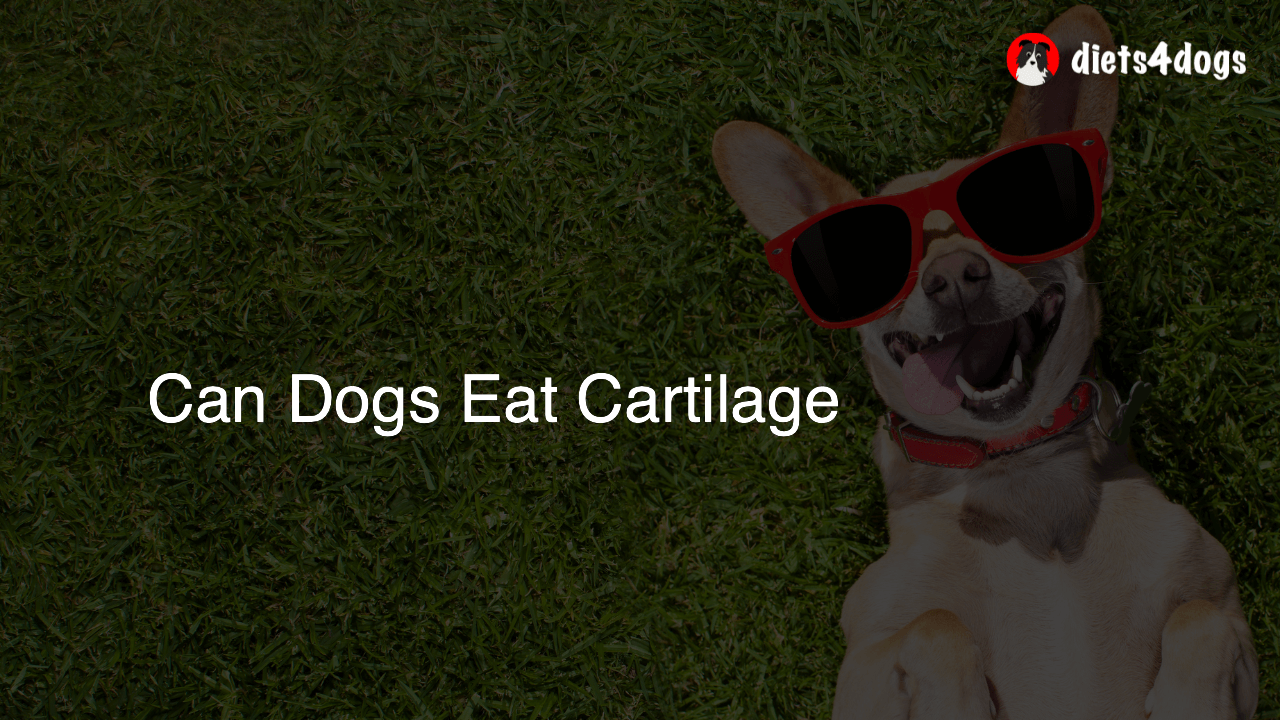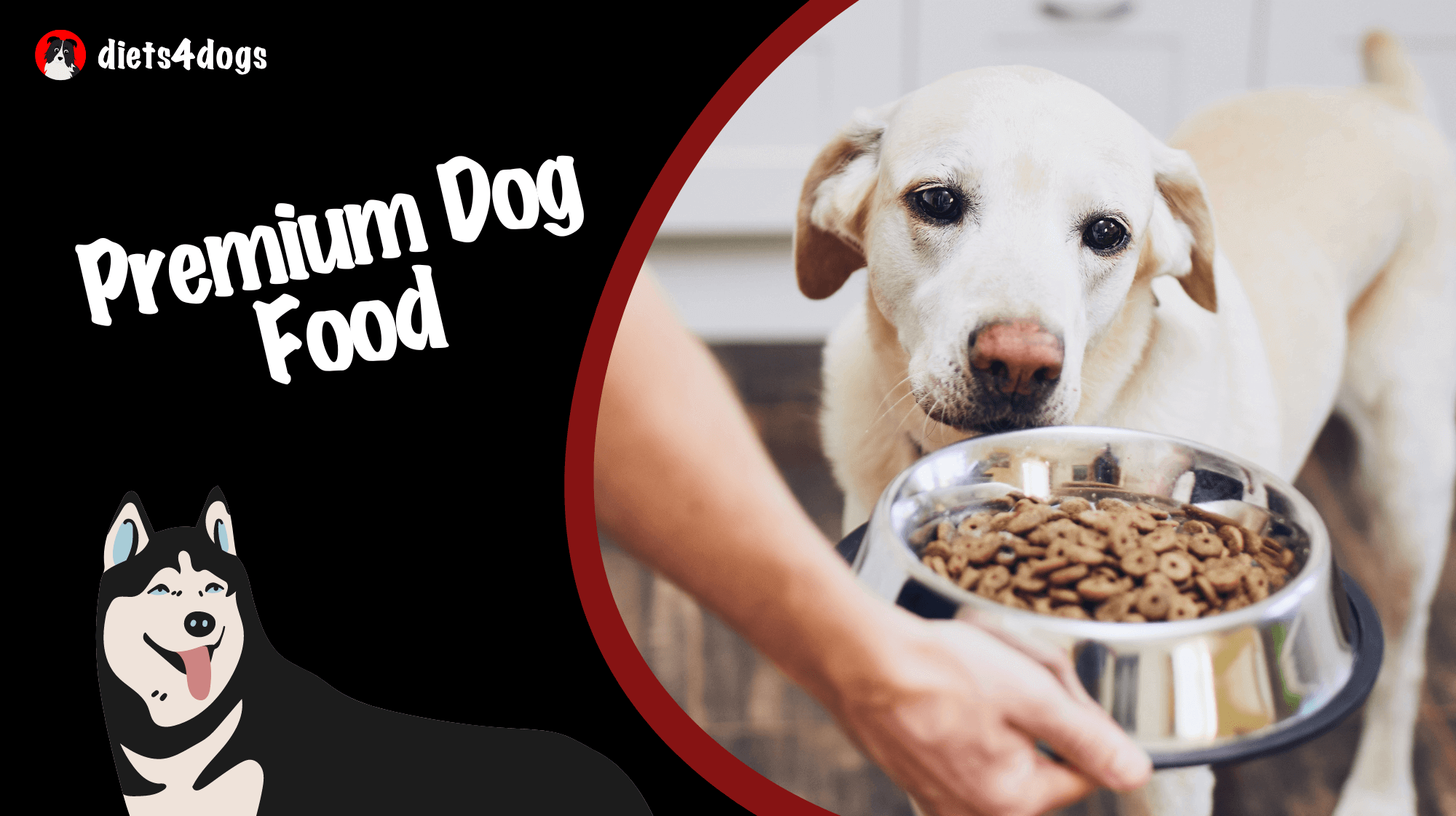Can Dogs Eat Cartilage
Yes, dogs can eat cartilage in moderation, as it is a natural source of chondroitin and glucosamine, which promote joint health. However, it’s essential to monitor your dog’s consumption, as too much cartilage can result in digestive issues. Always opt for raw or freeze-dried cartilage instead of cooked or processed forms to minimize the risk of splintering and choking hazards.
Can Dogs Eat Cartilage
As a dog owner, it’s normal to want the best for your furry friend, and this includes providing them with delicious and nutritious food. A common question that comes up is whether dogs can eat cartilage. The answer is yes, dogs can eat cartilage in moderation, as it is a natural source of chondroitin and glucosamine, which promote joint health. Keep reading to learn more about the benefits of cartilage for dogs, how to safely provide it to your pet, and the risks to be mindful of.
Benefits of Cartilage for Dogs
Cartilage is a type of connective tissue found in various parts of an animal’s body, and it offers several health benefits to dogs, such as:
- Joint health: Chondroitin and glucosamine found in the cartilage help promote healthy joints and ease the symptoms of arthritis in dogs.
- Dental hygiene: Gnawing on cartilage can help reduce plaque and tartar buildup, ultimately promoting better dental health.
- Protein: Cartilage is a good source of protein, which contributes to your dog’s overall health by supporting muscle growth, tissue repair, and immunity.
Choosing the Right Cartilage for Your Dog
When selecting cartilage for your dog, it’s essential to ensure it’s safe, nutritious, and unprocessed. Here are some tips on making the best choice:
Raw or Freeze-Dried Cartilage
Opt for raw or freeze-dried cartilage, as cooking can change its structure, making it brittle and prone to splintering. Splintered cartilage can pose a choking hazard or cause injury to your dog’s internal organs. Raw or freeze-dried options are safer and more natural for your dog to consume.
Size Matters
Make sure you choose cartilage that is appropriately sized for your dog. A small piece may pose a choking hazard for a large dog, and a large piece may be challenging for a small dog to eat. Selecting the right size ensures your dog can safely enjoy the treat.
High-Quality Sources
Purchase cartilage from trusted sources, such as premium dog food suppliers or reputable pet stores. This ensures that the cartilage is free from additives, preservatives, and harmful bacteria.
Preparing Cartilage for Your Dog
Keep these tips in mind when preparing cartilage for your dog:
Start with a Clean Wash
Thoroughly wash the cartilage under cold running water to remove any dirt, debris or bacteria. If using the freeze-dried variety, follow the manufacturer’s directions for rehydration and rinsing.
Consider Freezing
Freezing the cartilage can make it an even more enjoyable treat for your dog, particularly during the hot summer months. Freezing can also increase the time it takes for your dog to gnaw through the treat, providing a longer-lasting chewing session and greater dental benefits.
Risks and Precautions
Although cartilage is generally safe for dogs, there are some risks and precautions to be aware of:
- Splintering: As mentioned previously, cooked or processed cartilage can splinter, causing choking hazards or internal injuries. Always opt for raw or freeze-dried cartilage instead.
- Digestive issues: Some dogs may not tolerate cartilage well, resulting in diarrhea or an upset stomach. Always introduce new food items slowly and monitor your dog’s response.
- Overconsumption: Too much cartilage can lead to weight gain or imbalanced nutrient intake. Make sure you moderate your dog’s cartilage consumption, and don’t forget to account for these treats when calculating your dog’s daily food intake.
Overall, cartilage can be a fantastic and enjoyable treat for your dog when chosen and prepared correctly. By including cartilage in their diet, you are satisfying their natural instincts to chew while promoting joint health, dental hygiene, and a delicious source of protein. Don’t forget to pair cartilage with high-quality dog food to ensure your furry friend gets all the nutrients they need.
Alternatives to Cartilage for Dogs
Although cartilage can be a great treat option for your dog, it’s always good to have alternative options on hand. Some popular and nutritious alternatives for dogs include:
- Bully sticks: These healthy, protein-packed treats are made from beef muscle and provide a long-lasting chew for your dog.
- Deer antlers: Antlers from deer and elk make a great treat as they are hard, durable, and contain essential minerals such as calcium, phosphorus, and glucosamine.
- Raw bones: Giving your dog raw bones (never cooked) can promote dental health, satisfy their desire to chew, and provide them with essential nutrients. Be sure to avoid giving them small bones or those that can splinter easily.
- Dental chews: Specially designed dental chews can help maintain your dog’s oral health while offering them an enjoyable treat to chew on.
Monitoring Your Dog’s Cartilage Consumption
As with any treat, it’s essential to keep an eye on your dog’s response to cartilage and to make adjustments if necessary. Here are some tips on monitoring your dog’s cartilage consumption:
Observe Their Chewing
While your dog enjoys their cartilage treat, keep a close eye on their chewing habits. Ensure that they’re chewing the cartilage properly and not attempting to swallow large pieces or fragments. This can help you prevent choking hazards and ensure they’re getting the most out of their treat.
Watch for Allergic Reactions
Although uncommon, some dogs may have allergies or sensitivities to specific types of cartilage. If you notice any unusual signs such as excessive itching, vomiting, diarrhea, or difficulty breathing, discontinue the cartilage immediately and consult your veterinarian for guidance.
Monitor Weight and Overall Health
Keep an eye on your dog’s weight and overall health as you introduce cartilage into their diet. If you notice any weight gain or health issues, adjust their treat consumption and discuss these concerns with your veterinarian.
Consult with Your Veterinarian
Before introducing new treats, such as cartilage, into your dog’s diet, it’s advisable to discuss the idea with your veterinarian. They can provide guidance on the specific nutritional needs and dietary restrictions your dog may have, as well as offer advice on safe treat options that are suitable for your pet.
Every dog is unique, and by closely monitoring their health, adjusting their diet as necessary, and consulting with a trusted veterinarian, you can ensure that your furry friend enjoys a delicious and well-balanced diet that includes the occasional cartilage treat.
FAQs About Feeding Cartilage to Dogs
In case you have more questions about the ins and outs of feeding cartilage to dogs, we have compiled a list of frequently asked questions to address some common concerns:
1. Can dogs eat chicken cartilage?
Yes, dogs can eat chicken cartilage, but it’s crucial to make sure it’s raw or freeze-dried. Avoid giving your dog cooked chicken cartilage since it can splinter and pose a choking hazard or cause internal injury.
2. How often should I give my dog cartilage?
Cartilage should be given as a treat and not as the main source of nutrition. It’s essential to moderate your dog’s consumption, so offer cartilage no more than once or twice a week, depending on their size and overall health.
3. Can cartilage treats replace regular dog food?
No, cartilage treats should not replace regular dog food. While cartilage provides some benefits and nutrients, it doesn’t contain all the essential nutrients your dog requires. Always maintain a balanced diet for your dog, including high-quality dog food.
4. Can I give my puppy cartilage?
You can give cartilage to puppies, but take extra precautions to avoid choking hazards. Choose small, appropriately-sized pieces and always monitor them closely while they chew. Introduce cartilage gradually, and be attentive to any signs of discomfort or digestive issues.
5. What type of cartilage is best for dogs?
The best cartilage for dogs is raw or freeze-dried and sourced from reputable suppliers. Selecting cartilage from high-quality sources ensures safety, minimizes risks, and maximizes the health benefits for your dog.
6. Can dogs have cartilage from cooked bones?
No, do not give your dog cartilage from cooked bones, as cooking can make the cartilage brittle and prone to splintering, which could be hazardous to your dog. Always opt for raw or freeze-dried cartilage instead.
7. What if my dog has a sensitive stomach?
If your dog has a sensitive stomach, introduce cartilage slowly and in small amounts. Observe them for any signs of digestive distress like diarrhea or vomiting. If your dog shows any adverse reactions, discontinue offering cartilage and consult your veterinarian for alternative treat options.
8. Can cartilage treats cause blockages in dogs?
While rare, large pieces of cartilage or improper chewing can cause blockages. To minimize this risk, choose cartilage pieces of appropriate size for your dog, and always supervise them while they chew to ensure they’re breaking the cartilage down properly.
9. Can senior dogs with arthritis eat cartilage?
Yes, senior dogs with arthritis can benefit from eating cartilage, as it contains chondroitin and glucosamine, which can help promote joint health and alleviate arthritis symptoms. Always monitor your senior dog’s consumption and consult your veterinarian for personalized guidance.
10. How should I store cartilage?
Store raw cartilage in the refrigerator or freezer to keep it fresh and safe for consumption. Keep freeze-dried cartilage in a cool, dry place in an airtight container or its original packaging to maintain freshness and prevent spoilage.












